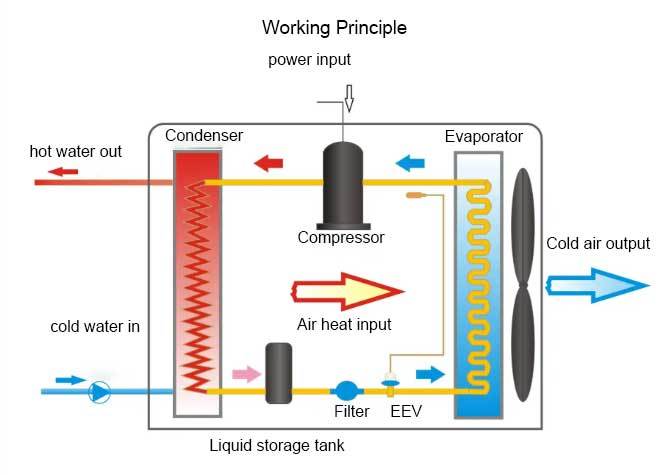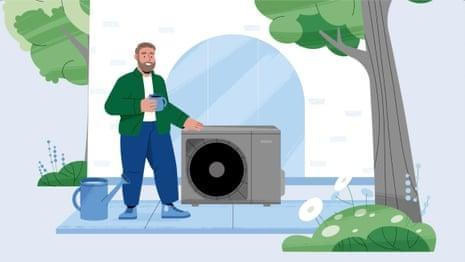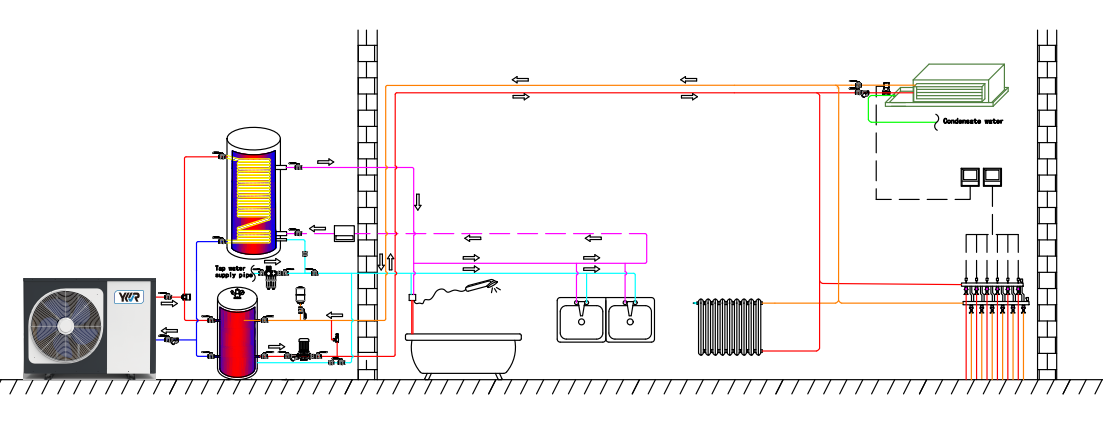16
2025
-
10
Thinking about upgrading to a heat pump but not quite sure where to start?
Record numbers of heat pumps were installed in the UK in 2024, according to the Heat Pump Association. At just under 100,000, the figure is well below the government’s ambitious aim of 600,000 a year by 2028 but is at least edging in the right direction. Even so, it’s clear that many more people will need to make the switch from gas boilers to the more carbon-friendly heat pumps if the UK is to meet its net zero goals.
The heating and cooling of homes and commercial buildings accounts for 26% of global energy-related emissions, according to the International Energy Agency. In the UK, the National Audit Office reported last year that heating 28m homes created 18% of all UK greenhouse gas emissions in 2021. So it’s probably time for many more of us to understand the steps we can take to lower the carbon footprint of our homes.
What is a heat pump?
Heat pumps take heat from outside, make it warmer, and transfer it into a building to provide heating and hot water. Depending on the type, pumps can extract heat from the air, ground or water. They can also work in reverse, absorbing heat from a building to cool it down.
How do they work?
It may seem counterintuitive, but at the heart of a heat pump is a refrigerant that flows constantly through the system. The process starts with the refrigerant in liquid form absorbing heat from outside. As its temperature rises, the refrigerant turns into a gas (it’s like water evaporating at 100C – but with a refrigerant it happens at far lower temperatures, even subzero).
The gas flows to a compressor where its temperature is increased because, put simply, the compression means the molecules have less space so they collide more, releasing heat. It’s this higher level of heat that is transferred from the refrigerant gas to a building’s heating system – warming water for radiators and the hot water tank.

Having given up its heat, the gas is decompressed, and turns back to liquid, allowing the cycle to begin over again. Crucially, this also works efficiently in harsh Nordic climates like Sweden, where heat pump manufacturer NIBE is based and the systems are commonplace. Here are the three main types of heat pump on offer:
Air source heat pump
This is the most common form of domestic heat pump in the UK and, as the name suggests, it uses outdoor air to start the “refrigeration cycle”. The external workings are contained in a box about the size of two wheelie bins, while inside the property a hot water cylinder is needed.
Ground source heat pump
This is the subterranean version, which makes use of underground heat. Pipes are laid under, say, a lawn or in boreholes and a liquid (mainly a mixture of water and antifreeze) is circulated through them to absorb the heat. The heat is transferred into the building where the heat pump raises the temperature for heating and hot water. Ground source heat pumps are more efficient than air-source pumps but can cost more to install.
Exhaust air heat pump
The third type is the exhaust air heat pump, a ventilation system which is growing in popularity, especially with people living in flats, as they don’t require an outdoor unit or ground work, just a simple vent in the wall. Here, the heat pump uses waste heat that it draws in from inside the house, extracting the energy to heat radiators or underfloor heating, as well as a hot-water cylinder. The cold, stale air is then exhausted out of the building through the vent, so the system provides heating, hot water and ventilation, and improves air quality by preventing the build-up of condensation.
How long do they last?
With regular servicing and maintenance, heat pumps will last, on average, for 15 to 20 years.

Are you ready to reap the benefits of a heat pump?
The environmental benefits of making the switch
The switch to heat pumps is mainly focused around decarbonisation, the climate crisis and the drive to net zero. But it could also significantly help reduce air pollution. A study published by the University of York found that gas boilers were responsible for 72% of the nitrogen oxides in central London between 2021 and 2023. Rather than running on fossil fuels such as gas, heat pumps use electricity, which, while currently more expensive than gas, can use more sustainable sources – particularly as more wind and solar farms are being built. Heat pumps also use energy more efficiently than gas and oil boilers, and can be up to six times more energy efficient, in the case of the latest NIBE ground source heat pump.

Tips for planning an installation
To truly enjoy the benefits of a heat pump, it’s essential that you get the right one for your home and that it’s properly installed by experts.
Pretty high on the list will be cost – and it’s worth knowing that depending where in the UK you live there are grants available, including £7,500 towards an air and ground source heat pump in England and Wales through the boiler upgrade scheme. In Scotland, the government is offering a home energy grant of up to £7,500, plus an additional £7,500 available as an optional interest-free loan. Another benefit is that no VAT is charged on heat pumps in the UK.
You’ll need your property to be well insulated and, as heat pumps typically operate at lower temperatures than gas boilers, you might need to increase the size of your radiators so they emit sufficient heat. All houses will need a heat loss survey and inspection of their systems before the heat pump is installed.
Relevant News





